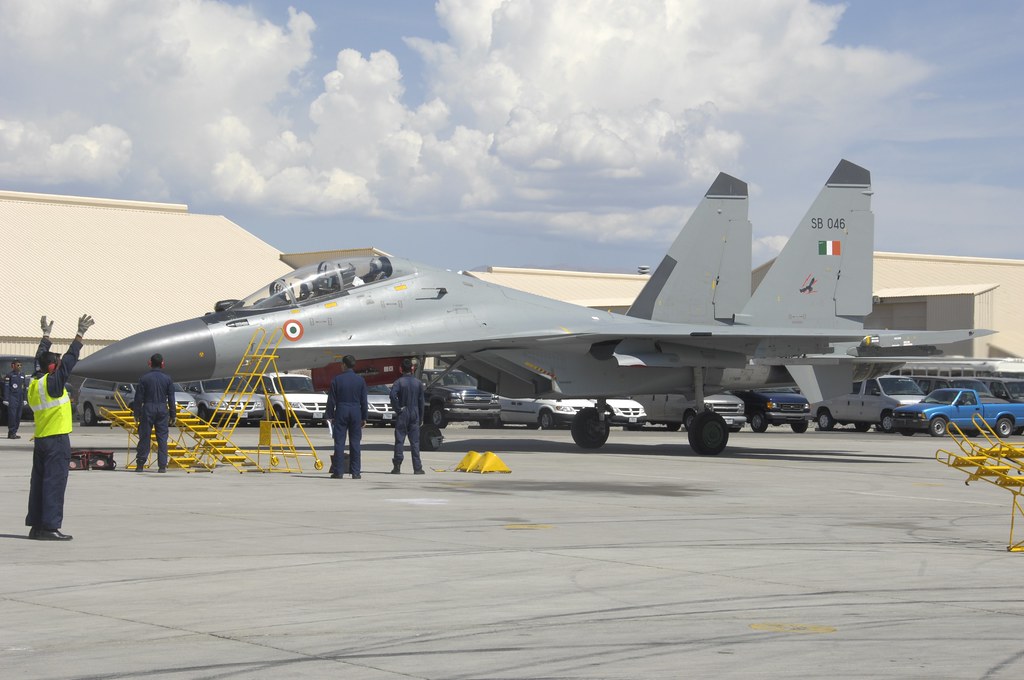
On the 9th of April, the Indonesian National Military-Air Force commemorated its 77th anniversary, marking a significant milestone for the armed forces. The backbone of the IdAF currently comprises 33 multirole American F-16 Fighting Falcon fighters, with an additional 42 French Dassault Rafale fighter jets expected to be added in the near future. Alongside the F-16s, the IdAF also operates 11 Russian multirole Sukhoi Su-30MK2s, with a further 5 units of Sukhoi Su-27SKM in its inventory.
To showcase its impressive array of aircraft, the Indonesian Air Force Command presented a striking visual display at the Halim Perdanakusuma air base in East Jakarta. The American F-16 and the Russian Su-30MK2 were placed side by side on the runway, offering a unique perspective of the two planes. The resulting photograph captured the stark contrast in size between the two fighter jets, with the Su-30MK2 appearing almost twice the size of its American counterpart.
The photograph not only highlights the physical differences between the two planes but also prompts us to reflect on our sense of visualization. Typically, fighter jets are depicted in action or parked in a hangar, with little attention paid to their size or scale. However, this photograph emphasizes the vast difference in size between the two planes, made even more apparent by the presence of Indonesian pilots on the runway next to them.
Overall, the image serves as a powerful reminder of the scale and diversity of the world’s military hardware, showcasing the different technologies, capabilities, and traditions of various nations.
“At 62 m² the Sukhoi Su-30’s wing area is twice that of an F-16. It also has an empty weight of 17,000 kg, the same as that of a Boeing B-17 Flying Fortress bomber of WWII! It’s ginormous…,” wrote Air Power wrote in a tweet.
Not only does the Su-30MK2 appear larger than the F-16 in the photo, but also the two Su-27SKMs positioned behind the two Su-30MK2 on the left and right sides, which are also larger than the F-16 and T-50 Golden Eagles, among other aircraft. The photo raises some questions, such as whether the size of the Su-30MK2 would be similar or close to that of the American F-16 if the Russians had produced it as a single-engine fighter. However, experts say it is entirely possible.
According to the American publication The Drive, the Su-30MK2 is superior to the F-16 not only in size, but also in several other key characteristics, such as speed, high ceiling, duration of stay in flight, and the mass of portable weapons.
Moving beyond the fascinating photo, Indonesia is committed to building a quality air fleet. For example, the French Rafales will replace the Russian Su-35s. Jakarta had initially planned to purchase 11 Su-35 fighters, but pressure from Washington prompted the Asian nation to seek the services of France’s Dassault Aviation. Additionally, Indonesia is seeking to acquire a 4.5 or 5 generation fighter through its partnership with South Korea on the KF-21 Boramae program.
This program aims to produce the latest South Korean fighter, which is expected to enter serial production in the next 16 months. Indonesia’s participation in the program amounts to nearly half a billion USD, and it has faced some hesitations and payment problems. However, Jakarta recently resumed payments to the program after rumors circulated that Indonesia would withdraw from the program. If Indonesia fulfills its financial commitments, it will hold a 10% share of the total in the KF-21 Boramae fighter program.




